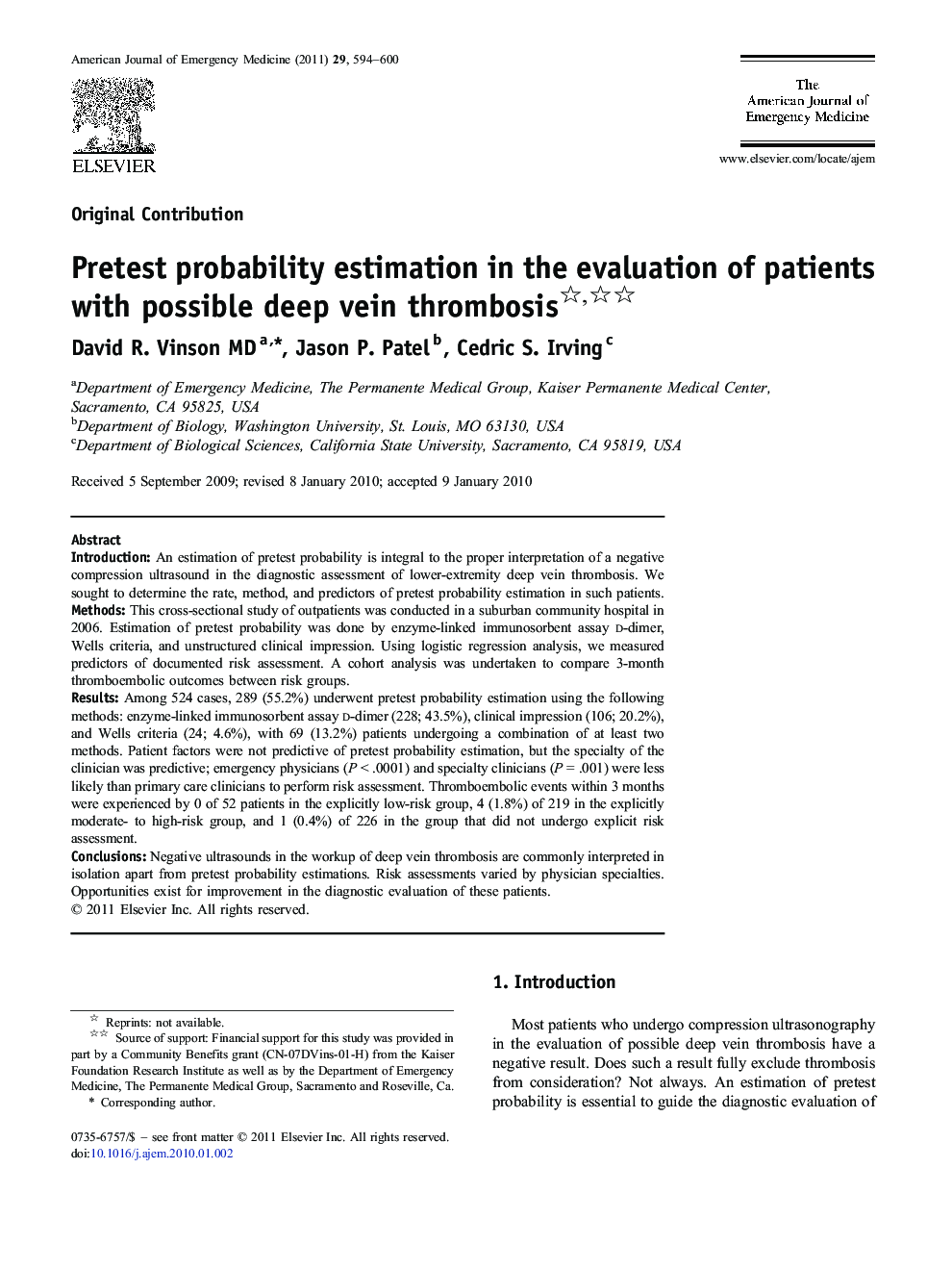| کد مقاله | کد نشریه | سال انتشار | مقاله انگلیسی | نسخه تمام متن |
|---|---|---|---|---|
| 3225387 | 1588147 | 2011 | 7 صفحه PDF | دانلود رایگان |

IntroductionAn estimation of pretest probability is integral to the proper interpretation of a negative compression ultrasound in the diagnostic assessment of lower-extremity deep vein thrombosis. We sought to determine the rate, method, and predictors of pretest probability estimation in such patients.MethodsThis cross-sectional study of outpatients was conducted in a suburban community hospital in 2006. Estimation of pretest probability was done by enzyme-linked immunosorbent assay d-dimer, Wells criteria, and unstructured clinical impression. Using logistic regression analysis, we measured predictors of documented risk assessment. A cohort analysis was undertaken to compare 3-month thromboembolic outcomes between risk groups.ResultsAmong 524 cases, 289 (55.2%) underwent pretest probability estimation using the following methods: enzyme-linked immunosorbent assay d-dimer (228; 43.5%), clinical impression (106; 20.2%), and Wells criteria (24; 4.6%), with 69 (13.2%) patients undergoing a combination of at least two methods. Patient factors were not predictive of pretest probability estimation, but the specialty of the clinician was predictive; emergency physicians (P < .0001) and specialty clinicians (P = .001) were less likely than primary care clinicians to perform risk assessment. Thromboembolic events within 3 months were experienced by 0 of 52 patients in the explicitly low-risk group, 4 (1.8%) of 219 in the explicitly moderate- to high-risk group, and 1 (0.4%) of 226 in the group that did not undergo explicit risk assessment.ConclusionsNegative ultrasounds in the workup of deep vein thrombosis are commonly interpreted in isolation apart from pretest probability estimations. Risk assessments varied by physician specialties. Opportunities exist for improvement in the diagnostic evaluation of these patients.
Journal: The American Journal of Emergency Medicine - Volume 29, Issue 6, July 2011, Pages 594–600